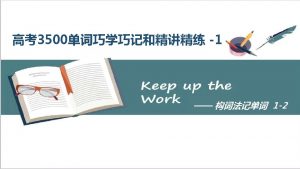A Lecture Presentation in Power Point to accompany



























































- Slides: 59

A Lecture Presentation in Power. Point to accompany Essentials of Economics by Robert L. Sexton Copyright © 2003 Thomson Learning, Inc. Thomson Learning™ is a trademark used herein under license. ALL RIGHTS RESERVED. Instructors of classes adopting EXPLORING ECONOMICS, Second Edition by Robert L. Sexton as an assigned textbook may reproduce material from this publication for classroom use or in a secure electronic network environment that prevents downloading or reproducing the copyrighted material. Otherwise, no part of this work covered by the copyright hereon may be reproduced or used in any form or by any means—graphic, electronic, or mechanical, including, but not limited to, photocopying, recording, taping, Web distribution, information networks, or information storage and retrieval systems—without the written permission of the publisher. Printed in the United States of America ISBN 0030342333 Copyright © 2003 by Thomson Learning, Inc.

Chapter 14 Aggregate Demand Copyright © 2003 by Thomson Learning, Inc.

14. 1 Consumption: The Determinant of Aggregate Demand n Aggregate Demand (AD) is the sum of the demand for all goods and services in the economy. It can also be seen as the quantity of real GDP demanded at different price levels. n Aggregate Demand (AD) = Consumption (C) + Investment (I) + Government purchases (G) + Net Exports (X – M). Copyright © 2003 by Thomson Learning, Inc.

14. 1 Consumption: The Determinant of Aggregate Demand n n Consumption is by far the largest component of AD, typically almost 70 percent of total economic activity, measured by GDP. Understanding the determinants of consumption is critical to an understanding of the forces leading to changes in aggregate demand, which in turn, change total output and income. Copyright © 2003 by Thomson Learning, Inc.

14. 1 Consumption: The Determinant of Aggregate Demand n n The higher a nation’s income, the more it spends on consumption. For individuals, consumption increases with after-tax, or disposable, income. Consumption is also influenced by other factors. the “lumpiness” of some goods’ purchases, such as cars n interest rates n At higher real interest rates, consumers save more and consume less. Copyright © 2003 by Thomson Learning, Inc.

14. 1 Consumption: The Determinant of Aggregate Demand n n Households typically spend a large portion of their total disposable income, and save the rest Average propensity to consume (APC) n n the fraction of total disposable income that households spend on consumption Marginal propensity to consume (MPC) n the additional consumption that results from an additional dollar of disposable income Copyright © 2003 by Thomson Learning, Inc.

INVESTMENT (I) Investment expenditures—purchases of investment goods—is an important component of AD and is the most unstable category of GDP. It is sensitive to changes in economic, social, and political variables. Copyright © 2003 by Thomson Learning, Inc.

FACTORS IMPACTING INVESTMENT Investment is often determined by business conditions, particularly the level of income or output. For example, good business conditions “induce” a firm to invest. This type of investment is impacted by the level of optimism and the level of and rate of change in profits. Copyright © 2003 by Thomson Learning, Inc.

GOVERNMENT PURCHASES(G) Government purchases is an important part of AD. It is the spending by the federal, state and local governments on the purchases of new goods and services produced. Copyright © 2003 by Thomson Learning, Inc.

NET EXPORTS (X - M) Net exports can alter AD. Foreign buying of U. S. goods and services increases the AD, while imports are subtracted from AD, since spending on them does not represent demand for domestically produced goods and services. Trade deficits or negative net exports (X < M) lower aggregate demand; trade surpluses or positive net exports (X > M) increase aggregate demand, other things equal. Copyright © 2003 by Thomson Learning, Inc.

14. 2 Investment and Saving Market n n If we put the investment demand for the whole economy and national savings together, we can establish the real interest rate in the saving and investment market. The investment demand curve (ID) is downward sloping, reflecting the fact that investment spending varies inversely with the real interest rate—the amount borrowers pay for their loans. Copyright © 2003 by Thomson Learning, Inc.

14. 2 Investment and Saving Market n n At high real interest rates, firms will only pursue those few investment activities with even higher expected rates of return. As the real interest rate falls, additional projects with lower expected rates of return become profitable for firms, and the quantity of investment demanded rises. Copyright © 2003 by Thomson Learning, Inc.

14. 2 Investment and Saving Market n n The investment demand curve shows the dollar amount of investment forthcoming at different real interest rate. Because lower interest rates stimulate the quantity of investment demanded, governments often try to combat recessions by lowering interest rates. Copyright © 2003 by Thomson Learning, Inc.

Real Interest Rates, r (expected rate of return) The Investment Demand Curve r 1 r 0 r 2 B An increase in the real interest rate will lower the quantity of investment demanded A C A decrease in the real interest rate will raise the quantity of investment demanded A C ID 0 Q 1 Q 0 Q 2 Quantity of Investment (billions of dollars) Copyright © 2003 by Thomson Learning, Inc.

14. 2 Investment and Saving Market n For a given interest rate, n n If firms expect higher rates of return on their investments, the ID curve will shift to the right. If firms expect lower rates of return on their investments, the ID curve will shift to the left. Copyright © 2003 by Thomson Learning, Inc.

14. 2 Investment and Saving Market n Several determinants other than interest rates will shift the investment demand curve. n n technology inventory expectations of profit rates business taxes Copyright © 2003 by Thomson Learning, Inc.

14. 2 Investment and Saving Market n Product and process innovation cause the ID curve to shift out. n The development of new machines that can improve the quality and the quantity of products or lower the costs of production will increase the rate of return on investment, independent of the interest rate. The same is true for new products. Copyright © 2003 by Thomson Learning, Inc.

14. 2 Investment and Saving Market n Inventories are high. n n goods are stockpiled in warehouses lower expected rate of return on new investment, n n Firms with excess inventories of finished goods have little incentive to invest in new capital. so ID shifts to the left. Copyright © 2003 by Thomson Learning, Inc.

14. 2 Investment and Saving Market n Inventories are low. n n n firms look to replenish their shelves expected rate of return on new investment increases so ID shifts to the right. Copyright © 2003 by Thomson Learning, Inc.

14. 2 Investment and Saving Market n If higher expected sales and a higher profit rate are forecast, firms will invest in plant and equipment and the ID curve shifts to the right. n n More investment will be desired at a given interest rate. If lower expected sales and a lower profit rate are forecasted, the ID curve shifts to the left. n Fewer investments will be desired at a given interest rate. Copyright © 2003 by Thomson Learning, Inc.

14. 2 Investment and Saving Market n If business taxes are lowered, potential after-tax profits on investment projects will increase and shift the ID curve to the right. n n such as with an investment tax credit, Higher business taxes will lead to lower potential after-tax profits on investment projects and shift the ID curve to the left. Copyright © 2003 by Thomson Learning, Inc.

Real Interest Rates, r (expected rate of return) Shifts in the Investment Demand Curve A B An increase in the expected profit rate C A ID 2 0 Q 2 B ID 0 Q 0 A C A decrease in the expected profit rate ID 1 Quantity of Investment (billions of dollars) Copyright © 2003 by Thomson Learning, Inc.

14. 2 Investment and Saving Market n The supply of national saving is composed of both private saving and public saving. n n n Households, firms, and the government can supply savings. The supply curve of savings is upward sloping. At a higher real interest rate, there is a greater quantity of savings supplied. Copyright © 2003 by Thomson Learning, Inc.

14. 2 Investment and Saving Market n n Think of the interest rate as the reward for saving and supplying funds to financial markets. At a lower real interest rate, a lower quantity of savings is supplied. Copyright © 2003 by Thomson Learning, Inc.

Real Interest Rates, r A Saving Supply Curve Saving Supply (SS) B r 1 A r 0 r 2 0 A C A decrease in the real interest rate decreases saving. C Q 2 Q 0 A B An increase in the real interest rate increases saving. Q 1 Quantity of Saving (billions of dollars) Copyright © 2003 by Thomson Learning, Inc.

14. 2 Investment and Saving Market n If disposable (after-tax) income n n rises, the supply of savings shifts to the right; more savings would occur at any given interest rate. falls, the supply of savings shifts to the left; less saving would occur at any given interest rate. Copyright © 2003 by Thomson Learning, Inc.

14. 2 Investment and Saving Market n n As with the investment demand curve, there are noninterest determinants of the saving supply curve. Expected future earnings n n lower, you would tend to save more now at any given interest rate shifting the saving supply curve to the right. higher, you would tend to consume more and save less now, knowing that more income is right around the corner shifting the saving supply curve to the left. Copyright © 2003 by Thomson Learning, Inc.

Real Interest Rates, r Shifts in the Saving Supply Curve SS 2 r 0 C A SS 0 B SS 1 A B An increase in saving supply A C A decrease in saving supply 0 Q 2 Q 0 Q 1 Quantity of Saving (billions of dollars) Copyright © 2003 by Thomson Learning, Inc.

14. 2 Investment and Saving Market n In equilibrium, n n n desired investment equals desired national saving at the intersection of the investment demand curve and the saving supply curve. The real equilibrium interest rate is determined by the intersection of these two curves. If the real interest rate is above the equilibrium real interest rate, forces within the economy would tend to restore the equilibrium. Copyright © 2003 by Thomson Learning, Inc.

14. 2 Investment and Saving Market n n At a higher than real equilibrium interest rate, the quantity of savings supplied would be greater that quantity of investment demanded; there would be a surplus of savings at this real interest rate. As savers (lenders) compete against each other to attract investment demanders (borrowers), the real interest rate falls. Copyright © 2003 by Thomson Learning, Inc.

14. 2 Investment and Saving Market n n Alternatively if the real interest rate is below the equilibrium real interest rate, the quantity of investment demanded is greater than the quantity of saving supplied at that interest rate and a shortage of saving occurs. As investment demanders (borrowers) compete against each other for the available saving, the real interest rate is bid up. Copyright © 2003 by Thomson Learning, Inc.

Real Interest Rate Equilibrium in the Saving and Investment Market Surplus of Saving (real interest rate falls) SS r 1 r. E r 2 Shortage of Saving (real interest rate rises) Quantity of Saving and Investment Copyright © 2003 by Thomson Learning, Inc. ID

14. 3 The Aggregate Demand Curve n n The Aggregate Demand curve reflects the total amounts of real goods and services that all groups together want to purchase in a given time period. It indicates the quantities of real GDP (RGDP) demanded at different price levels. Copyright © 2003 by Thomson Learning, Inc.

14. 3 The Aggregate Demand Curve n n AD is different than the demand curve presented in Chapter 4, which looked at the relationship between the relative price of a good and the quantity demanded. The AD curve slopes downward, which means that there is an inverse(or opposite) relationship between the price level and real gross domestic product (RGDP) demanded. Copyright © 2003 by Thomson Learning, Inc.

14. 3 The Aggregate Demand Curve n n An increase in the price level causes RGDP demanded to fall. Conversely, if there is a reduction in the price level, the quantity of RGDP demanded rises. Copyright © 2003 by Thomson Learning, Inc.

Price Level Aggregate Demand Curve PL 1 PL 0 B A AD 0 RGDP 1 RGDP 0 RGDP Copyright © 2003 by Thomson Learning, Inc.

14. 3 The Aggregate Demand Curve n Three complementary explanations exist for the negative slope of the aggregate demand curve: n n n the real wealth effect, the interest rate effect and the open economy effect. Copyright © 2003 by Thomson Learning, Inc.

14. 3 The Aggregate Demand Curve n The real wealth effect n n n The real (adjusted for inflation) value of any asset of fixed dollar value, like cash, falls as the price level increases. People’s real wealth is reduced, reducing their planned purchases of goods and services, and lowering the quantity of RGDP demanded. If the price level falls, people’s real wealth in such forms will increase, increasing the quantity of RGDP demanded. Copyright © 2003 by Thomson Learning, Inc.

14. 3 The Aggregate Demand Curve n The real wealth effect can be summarized as: n n A higher price level reduced real wealth reduced purchasing power reduced RGDP demanded A lower price level increased real wealth greater purchasing power increased RGDP demanded. Copyright © 2003 by Thomson Learning, Inc.

14. 3 The Aggregate Demand Curve n The effect of the price level on interest rates can also cause the AD curve to have a negative slope. n At a higher price level, consumers will wish to hold more dollars in order to purchase those items that they want to buy. That will increase the demand for money. Copyright © 2003 by Thomson Learning, Inc.

14. 3 The Aggregate Demand Curve n n If the demand for money increases, and the Federal Reserve System, the controller of the money supply, does not alter the money supply, then interest rates will rise. In other words, the demanders of dollars will bid up the price of those dollars— the interest rate. Copyright © 2003 by Thomson Learning, Inc.

14. 3 The Aggregate Demand Curve n At higher interest rates, the opportunity cost of borrowing rises, and fewer interest-sensitive investments will be profitable, reducing the quantity of investment goods demanded by firms, as well as the quantity of consumer durable goods demanded by households. Copyright © 2003 by Thomson Learning, Inc.

14. 3 The Aggregate Demand Curve n n This interest rate effect will cause fewer investment goods to be demanded and, consequently, a lower RGDP demanded. On the other hand, if the price level fell, and people demanded less money as a result, then the interest rates would fall. Copyright © 2003 by Thomson Learning, Inc.

14. 3 The Aggregate Demand Curve n Lower interest rates would trigger greater investment and consumer durable spending and a larger real GDP would result. Copyright © 2003 by Thomson Learning, Inc.

14. 3 The Aggregate Demand Curve n The interest rate effect process can be summarized as: n n A higher price level increases money demand (money supply unchanged) increases the interest rate reduces investments reduces RGDP demanded; A lower price level decreases money demand (money supply unchanged) decreases the interest rate increases investments increases RGDP demanded. Copyright © 2003 by Thomson Learning, Inc.

14. 3 The Aggregate Demand Curve n n Many goods and services are bought and sold in global markets. If the prices of goods and services in the domestic market rise relative to those in global markets due to a higher domestic price level, consumers and businesses will buy more from foreign producers and less from domestic producers. Copyright © 2003 by Thomson Learning, Inc.

14. 3 The Aggregate Demand Curve n n Because real GDP is a measure of domestic output, the reduction in the willingness of consumers to buy from domestic producers leads to a lower level of real GDP demanded at the higher domestic price level. And if domestic prices of goods and services fall relative to foreign prices, more domestic products will be bought, increasing RGDP demanded. Copyright © 2003 by Thomson Learning, Inc.

14. 3 The Aggregate Demand Curve n The open economy effect can be summarized as: n n An increased price level decreases the demand for domestic goods decreases RGDP demanded; A decreased price level increases the demand for domestic goods increases RGDP demanded. Copyright © 2003 by Thomson Learning, Inc.

14. 4 Shifts in the Aggregate Demand Curve n n As in the supply and demand curves of Chapter 4, there can be both shifts in and movements along the AD curve. The real wealth effect, the interest rate effect, and the open (or foreign) economy effect result in the downward slope of the AD curve (not a shift in AD). n Each of these factors generates a movement along the AD curve because the general price level changed. Copyright © 2003 by Thomson Learning, Inc.

14. 4 Shifts in the Aggregate Demand Curve n The whole AD curve can shift to the right or left. n n If some non-price level determinant causes total spending to increase, then the AD curve will shift to the right. If a non-price level determinant causes the level of total spending to decline, then the AD curve will shift to the left. Copyright © 2003 by Thomson Learning, Inc.

Price Level Shifts in the Aggregate Demand Curve Left Right Decrease Increase AD 2 0 Copyright © 2003 by Thomson Learning, Inc. RGDP AD 0 AD 1

14. 4 Shifts in the Aggregate Demand Curve n Anything that changes the amount of total spending in the economy (holding price levels constant) will impact the AD curve. n n An increase in any component of GDP (C, I, G, and X – M) can cause the AD curve to shift rightward. Conversely, decreases in C, I, G, or X – M will shift AD leftward. Copyright © 2003 by Thomson Learning, Inc.

14. 4 Shifts in the Aggregate Demand Curve n A whole host of changes could impact consumption patterns. n shift AD to the right an increase in consumer confidence (C) n an increase in wealth (C) n Lower personal taxes (C) or business taxes (I) n an increase in population (C) n income increases abroad (X-M) n Optimistic business forecasts (I) n Copyright © 2003 by Thomson Learning, Inc.

14. 4 Shifts in the Aggregate Demand Curve n shift AD to the left A fall in consumer confidence (C) n a personal tax increase (C) or higher business taxes (I) n A reduction in government purchases (G) n Income falls abroad (X – M) n A pessimistic business forecast (I) n Copyright © 2003 by Thomson Learning, Inc.

14. 4 Shifts in the Aggregate Demand Curve n Since consuming less is saving more, an increase in savings, ceteris paribus, would shift AD to the left. Consumer debt may also be a reason why some consumers might put off additional spending. Copyright © 2003 by Thomson Learning, Inc.

14. 4 Shifts in the Aggregate Demand Curve n Increases in demand for investment goods, an important determinant of AD, occur for a variety of reasons. n AD will shift to the right (business investment increases) business confidence increases n real interest rates fall n business taxes reduced n n AD will shift to the left real interest rates rise n business taxes rise n Copyright © 2003 by Thomson Learning, Inc.

14. 4 Shifts in the Aggregate Demand Curve n n Government purchases is also part of total spending and therefore must impact AD. An increase in government purchases, other things equal, shifts AD to the right, while a reduction shifts AD to the left. Copyright © 2003 by Thomson Learning, Inc.

14. 4 Shifts in the Aggregate Demand Curve n n n Global markets are also important in a domestic economy. If major trading partners are experiencing economic slowdowns, then they will demand fewer U. S. imports. This causes net exports (X – M) to fall, shifting AD to the left. Copyright © 2003 by Thomson Learning, Inc.

14. 4 Shifts in the Aggregate Demand Curve n Alternatively, an economic boom in the economies of major trading partners may lead to an increase in our exports to them, causing net exports (X – M) to rise and AD to increase. Copyright © 2003 by Thomson Learning, Inc.
 Things that belong to salvation
Things that belong to salvation Accompany chapter 1
Accompany chapter 1 Right axillary lymph node
Right axillary lymph node Accompany
Accompany 01:640:244 lecture notes - lecture 15: plat, idah, farad
01:640:244 lecture notes - lecture 15: plat, idah, farad Hindi presentation topics
Hindi presentation topics Power point presentation design west vancouver
Power point presentation design west vancouver Power triangle diagram
Power triangle diagram Informsu
Informsu Point point power
Point point power Lecture presentation software
Lecture presentation software Power system dynamics and stability lecture notes
Power system dynamics and stability lecture notes Power system analysis lecture notes
Power system analysis lecture notes Power semiconductor devices lecture notes
Power semiconductor devices lecture notes Switch mode power supply lecture notes
Switch mode power supply lecture notes Power system dynamics and stability lecture notes
Power system dynamics and stability lecture notes What are some traditions in things fall apart
What are some traditions in things fall apart Fetal lie
Fetal lie Vertex presentation
Vertex presentation Identify hazards
Identify hazards Point of view presentation
Point of view presentation The starting point in a presentation
The starting point in a presentation Solar power satellites and microwave power transmission
Solar power satellites and microwave power transmission Actual power and potential power
Actual power and potential power Flex power power supply
Flex power power supply Dispersive power of grating experiment
Dispersive power of grating experiment Power of a power property
Power of a power property Chain rule範例
Chain rule範例 Power angle curve in power system stability
Power angle curve in power system stability Power absorbed or delivered
Power absorbed or delivered Evangelio del domingo en power point
Evangelio del domingo en power point Ejemplos de ova en power point
Ejemplos de ova en power point La boutique del powerpoint
La boutique del powerpoint Power point sul tennis
Power point sul tennis Tm pp
Tm pp Powerpoint sul riciclo
Powerpoint sul riciclo Animasi terima kasih power point bergerak
Animasi terima kasih power point bergerak Sekolah sabat powerpoint 2021
Sekolah sabat powerpoint 2021 Barni
Barni La boutique del power point
La boutique del power point La boutique del power point
La boutique del power point La boutique del power point
La boutique del power point Pengertian gizi kuliner
Pengertian gizi kuliner Decreto 1330
Decreto 1330 Powerpoint
Powerpoint Presentación de un portafolio estudiantil ejemplo
Presentación de un portafolio estudiantil ejemplo Icon pada toolbar untuk format penomoran adalah……
Icon pada toolbar untuk format penomoran adalah…… Formula resistividad
Formula resistividad Microsoft powerpoint disadvantages
Microsoft powerpoint disadvantages Ventajas y desventajas de powerpoint
Ventajas y desventajas de powerpoint Conclusioni power point
Conclusioni power point La boutique del powerpoint
La boutique del powerpoint Rpp ppt
Rpp ppt Power point fisica
Power point fisica Power point
Power point Concentrese en power point
Concentrese en power point Modelos de bosquejo
Modelos de bosquejo Powerpoint sugli egizi
Powerpoint sugli egizi La boutique del power point x
La boutique del power point x La boutique del powerpoint
La boutique del powerpoint



















































































